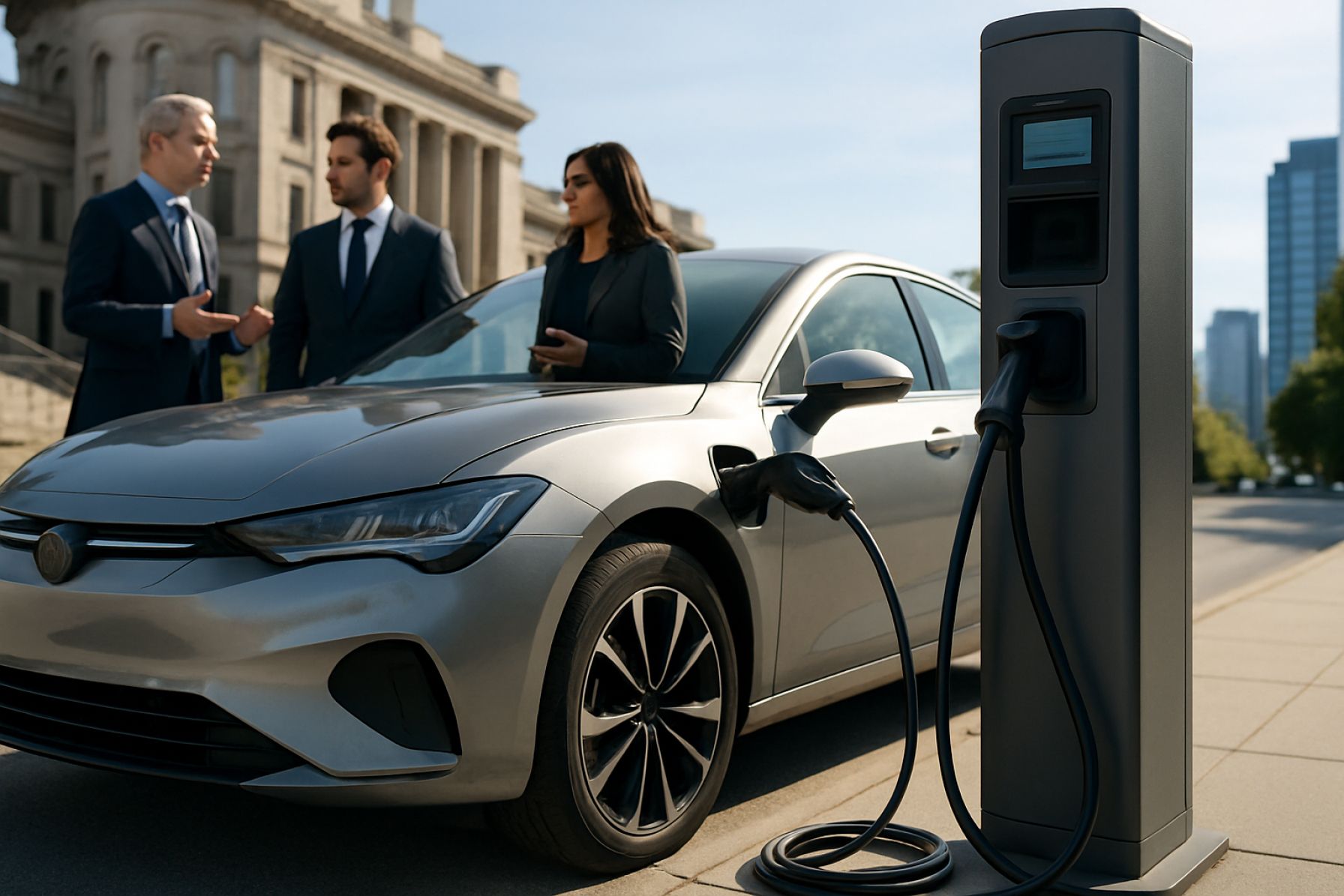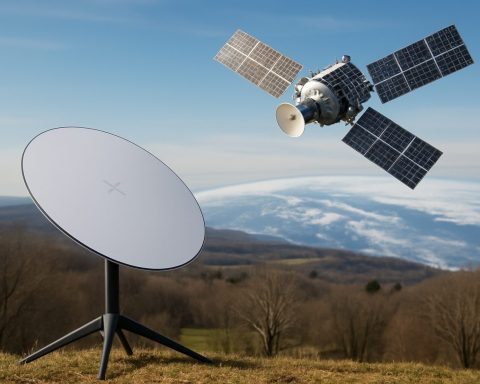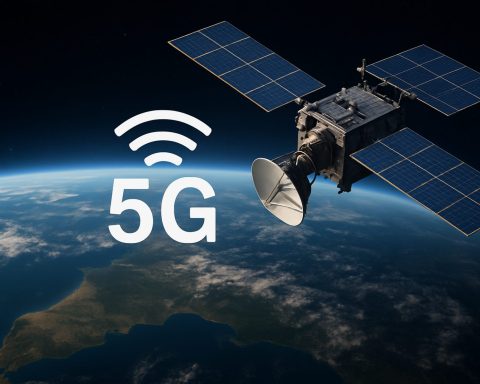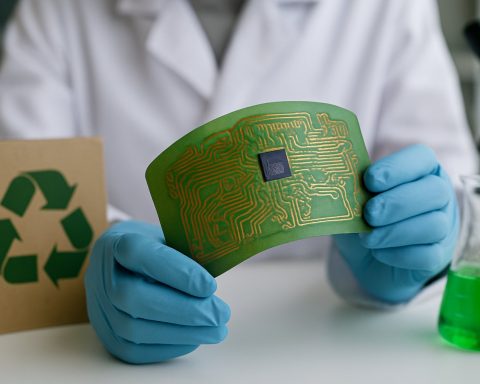- Congress may soon cut federal EV tax credits and add annual fees, introducing uncertainty for drivers, automakers, and the clean tech sector.
- Debate continues between those prioritizing fiscal responsibility and those warning of harm to EV adoption and jobs amid aggressive clean energy investments.
- Orange EV leads in electrifying industrial transportation, with battery-powered yard trucks saving major fuel costs and dramatically reducing emissions for warehouses and distribution centers.
- ChargePoint and Eaton are creating a unified EV charging network, aiming for seamless hardware, software, and grid integration to drive reliability and mass adoption.
- ADS-TEC Energy expands ultra-fast charging in rural Alabama, helping bridge infrastructure gaps and support broad EV accessibility.
- The U.S. EV market’s future depends on policy decisions, continued technological innovation, and nationwide commitment to sustainable mobility solutions.
https://youtube.com/watch?v=RF-xImlsxF0
Wheels of change grind louder this season across America’s highways and industrial yards. As Congress weighs controversial changes to electric vehicle incentives, a trio of industry trailblazers—Orange EV, ChargePoint, and ADS-TEC Energy—race to redefine the country’s all-electric future, fusing policy battles with breakthrough technology and sudden utility.
Washington’s Shockwave
Capitol Hill sent tremors through the EV world with its sweeping “One Big Beautiful Bill”—a legislative move that threatens to erase the landmark $7,500 federal tax credit for new electric vehicles by 2026 and slash the $4,000 credit for used EVs even sooner. Alongside, the prospect of a $250 annual registration fee for EVs and $100 for hybrids targets everyday owners, creating a ripple of uncertainty among drivers and automakers alike.
Supporters thump the table for fiscal prudence, arguing these measures protect taxpayers from bankrolling luxury car buyers, while critics warn of deep scars across America’s EV market, potential job cuts, and a stalling of clean tech leadership, particularly just as states pour billions into clean energy and mobility. The Senate now clutches the fate of national EV adoption—an outcome poised to steer both economic and environmental fortunes for years to come.
Orange EV: Electrifying the Industrial Heartland
Meanwhile, in bustling warehouses and at sprawling distribution hubs, Orange EV—a company synonymous with battery-powered workhorses—stages a quiet revolution. Yard after yard, their signature e-TRIEVER® trucks are displacing diesel engines once notorious for guzzling fuel and choking out fumes. Now, fleets in the U.S. and Canada boast over 100 Orange EV trucks each, reaping the rewards of 98% uptime and slashing operational downtime.
The numbers echo: two Orange EV trucks alone have saved nearly $400,000 in fuel costs after clocking 30,000 labor-intensive hours. Since launch, more than 1,400 of their vehicles have amassed over 8.5 million work hours, sparing untold tons of pollution and spearheading a migration to cleaner yard operations. Their turnkey approach—vehicles, charging, service—removes the friction from going electric.
ChargePoint and Eaton: Building a Unified Grid
On city streets and suburban parking lots, the partnership between ChargePoint and energy giant Eaton signals a new era in EV infrastructure. By combining deep expertise in charging hardware, grid management, and software, the alliance promises a “one-stop shop” for fleets, businesses, and drivers seeking robust charging solutions.
Innovations on the horizon—like bidirectional charging and sophisticated vehicle-to-everything (V2X) networks—could soon transform parked EVs into distributed batteries powering offices and homes during outages or peak demand. This integrated vision not only streamlines installation and management, but bolsters overall reliability, a decisive factor for mass adoption.
ADS-TEC Energy: Fast and Farther in Alabama
While big coastal cities dominate tech headlines, Alabama quietly builds its EV backbone. ADS-TEC Energy has deployed its ChargeBox ultra-fast chargers—capable of juicing a vehicle up to 320kW—even in places where the grid once couldn’t keep pace. Installed at heralded Long-Lewis Ford dealerships, these chargers electrify regions like Hoover, the Shoals, and the River Region, giving rural drivers their first taste of rapid charging.
With more than $2 billion funneled into state EV projects, Alabama stands as a microcosm of America’s electric ambitions—old industry welded to cutting-edge infrastructure, stitched across urban and rural divides.
The nation’s electric journey remains charged with possibility and peril. Strained by legislative crosswinds yet bolstered by relentless innovation, the future of EVs in the U.S. hinges on both political resolve and visionary engineering. Whether Congress powers down incentives or not, the drive toward electrification—sparked by ambitious manufacturers and grid pioneers—shows little sign of running out of charge. For those eyeing the road ahead, adaptation, investment, and a commitment to sustainable mobility have never been so vital.
For more on EV technology and infrastructure trends, visit U.S. Department of Energy.
Shock EV Policy Shakeup: What Drivers & Fleets Need to Know as Tech Titans Reshape the Road Ahead
The EV Revolution Faces Unprecedented Crossroads: Expert Insights, Trends, and Next Steps
America’s highways and industry yards are at a transformative moment. Legislative shockwaves threaten to curb critical incentives just as EV infrastructure and tech races ahead. To help you navigate these seismic changes, we dive deeper into the implications for everyday drivers, fleet operators, and businesses—backed by authoritative insights, real-world applications, and actionable tips.
—
Key Facts Beyond the Headlines
1. The True Impact of Federal EV Incentive Rollbacks
– EV Sales at Stake: Removal of the $7,500 new EV tax credit could slash EV adoption by up to 30% for several years, per studies by the International Council on Clean Transportation (ICCT).
– Affordability Crisis: Average EV prices in the U.S. remain above $53,000 (Cox Automotive, 2023), putting many models out of reach if incentives vanish.
– Equity Concerns: The proposed $250 EV and $100 hybrid registration fees raise concerns about disproportionate impacts on lower-income and rural drivers—potentially slowing decarbonization in traditionally underserved markets.
2. How Orange EV Trucks Stack Up
– Cost of Ownership: Electric yard trucks can offer total cost of ownership savings of 30-40% over diesel, factoring in maintenance, fuel, and uptime.
– Real-World Applications: Orange EV’s turnkey model, encompassing vehicle, charging, and service support, is widely adopted in logistics hubs, food distribution centers, and port authorities.
– Fleet Transition How-To: Steps to electrify your fleet:
1. Assess duty cycles and yard layouts.
2. Calculate total cost of ownership vs. diesel.
3. Partner with turnkey providers for pilot programs.
4. Train operators and maintenance teams.
5. Analyze data for continuous improvement.
3. Innovations from ChargePoint & Eaton
– Bidirectional Charging 101: Vehicle-to-Grid (V2G) and V2X technologies let EVs send electricity back to the grid—potential for:
– Corporate campuses to reduce energy costs.
– Homeowners to power houses during blackouts.
– Compatibility: ChargePoint’s network supports most major EV brands, making it futureproof for fleets with mixed vehicles.
– Security and Control: Eaton provides advanced cyber-protection, load-balancing, and scalable monitoring—a crucial edge as infrastructure grows.
4. ADS-TEC Energy: Fast Charging’s Southern Advance
– Technical Specs: ADS-TEC’s ChargeBox delivers up to 320 kW with battery-buffered technology—meaning even locations with low grid capacity can offer ultrafast charging.
– Deployment Hacks: Utilities partnering with local governments in Alabama streamline permitting and site readiness, reducing deployment times for businesses.
5. Industry Forecasts & Trends
– EV Market Growth: Despite headwinds, U.S. EV sales expected to exceed 2 million units annually by 2026 (BloombergNEF), unless incentive cuts lead to significant drop-offs.
– Fleet Electrification: By 2030, 10-15% of U.S. fleet vehicles could be electric, driven by TCO advantages and municipal sustainability mandates.
– Infrastructure Expansion: Public and private sectors are targeting 500,000+ charging stations nationwide by 2030 (White House fact sheet).
—
Most Pressing Reader Questions Answered
Q: Will removing incentives stall America’s clean tech leadership?
A: Yes, according to the Alliance for Automotive Innovation, loss of consumer incentives could slow domestic EV innovation, hinder emissions targets, and undermine the auto industry’s global competitiveness.
Q: Are EV operating costs really lower?
A: Over the life of a typical EV, owners save $4,000–$6,000 in fuel and maintenance compared to gasoline cars (U.S. Department of Energy).
Q: Can rural and disadvantaged communities benefit?
A: Yes, but only with sustained policy support and expansion of charging infrastructure into non-urban areas, as demonstrated by Alabama’s projects.
Q: Are charging stations safe and sustainable?
A: Leading providers employ state-of-the-art cybersecurity and battery recycling programs; however, gaps remain in grid resilience and battery material sourcing.
—
Pros & Cons Overview
Pros
– Lower emissions and fuel costs
– High fleet uptime and reliability (as seen with Orange EV)
– New business opportunities in tech, utility, and maintenance sectors
– Improved air quality in logistics and urban centers
Cons
– Upfront costs remain high without incentives
– Infrastructure gaps in rural and low-income regions
– Policy uncertainty adds complexity to long-term planning
– Battery supply chain concerns and minerals sourcing (cobalt, lithium)
—
Quick Tips & Actionable Recommendations
– Fleet Operators: Start pilots with turnkey EV partners (like Orange EV); capture downtime/fuel savings data for broader rollout.
– Businesses: Take advantage of current federal/state incentives before they change; install scalable charging solutions compatible with bidirectional tech.
– Consumers: Research total cost of ownership—consider tax credits, local incentives, and charging needs before buying.
– Policymakers & Advocates: Support measures expanding charging infrastructure in underserved areas; push for sustainable battery sourcing and recycling.
– Communities: Partner with proven energy providers (ChargePoint, Eaton) for public and workplace charging; engage with local utilities on grid-readiness.
—
Final Insights & Predictions
The path to U.S. electrification hangs on a delicate balance of policy and innovation. Even as legislative threats loom, the relentless march of technology—fueled by industry giants, market forces, and state-level ambition—will likely keep America moving (albeit with possible detours). The winners will be those who adapt early, form strategic partnerships, and champion both economic and environmental sustainability.
For the latest updates, real-time policy tracking, and in-depth energy data, visit the U.S. Department of Energy.
—
Stay ahead. Electrify smart. The future is charging—don’t let the opportunity pass you by.











